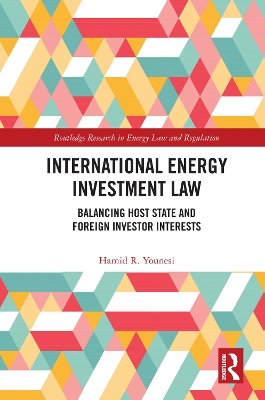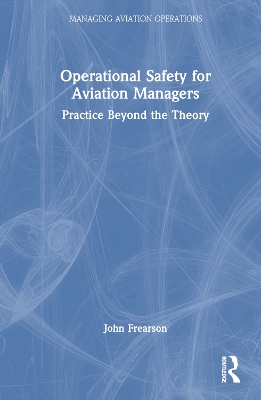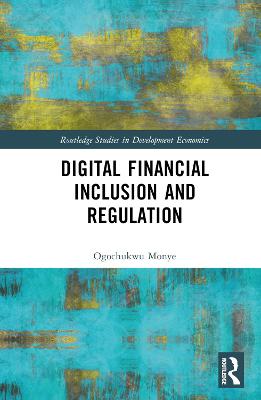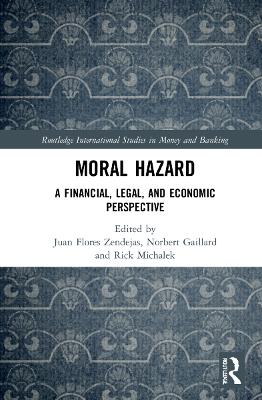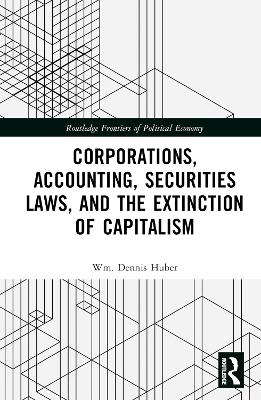Tax Avoidance and the Law
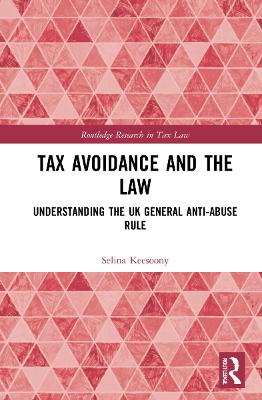 portes grátis
portes grátis
Tax Avoidance and the Law
Understanding the UK General Anti-Abuse Rule
Keesoony, Selina
Taylor & Francis Ltd
05/2022
234
Dura
Inglês
9780367472450
15 a 20 dias
471
Descrição não disponível.
Acknowledgements
Introduction
Background
1 Defining motive, purpose and intention
1.1 Criminal law perspective
1.2 Psychological perspective
1.3 Philosophical perspective
1.4 Tax law perspective
1.4 (a) Trading
1.4 (b) Expenditure
1.4 (c) Dividend stripping
1.4 (d) Targeted anti-avoidance rules
1.5 Conclusions
2 A move towards motive, intention and purpose
Introduction
2.1 Tackling tax avoidance
2.2 The divide between supporters of Ramsay and Westminster
2.2 (a) Supporters of Ramsay
2.2 (b) Supporters of Westminster
2.3 Motive, intention and purpose considered across othermareas of tax law
2.3 (a) Trades, professions and vocations
2.3 (b) Expenditure
2.3 (c) Accountancy standards
2.4 Why the "motive approach" is considered
2.5 How motive, intention and purpose are considered
2.5 (a) The "substance over form" doctrine
2.5 (b) Purpose
2.5 (c) Commercial or business purpose
2.5 (d) The step transaction doctrine
2.5 (e) Motive or intention
2.6 Suitability of the motive approach in tax law
2.6 (a) Is the motive approach necessary?
2.6 (b) Restructuring transactions
2.6 (c) Inconsistencies
2.6 (d) Constitutional legitimacy of the motive approach
2.7 Conclusion
3 The GAAR provisions analysed
Introduction
3.1 The GAAR: An overview
3.2 The GAAR provisions
3.2 (a) Tax advantage
3.2 (b) Tax arrangement
3.2 (c) The main purpose test
3.2 (d) The double reasonableness test
3.2(d)(i) Reasonableness in tort and contract law
3.2(d)(ii) "Reasonableness" in public law
3.2(d)(iii) Reasonable man
3.2 (e) Abuse according to the GAAR
3.3 Abuse according to the GAAR guidance
3.4 What is not abusive
3.5 The scope of the GAAR
3.6 The Aaronson Report
3.7 Penalties
3.8 An EU-wide GAAR
3.9 Conclusion
4 General anti-avoidance legislation in other jurisdictions
Introduction
4.1 The United States' Economic Substance Doctrine ("ESD")
4.1 (a) Common law background
4.1 (b) The ESD provisions
4.1 (c) Case law post the American ESD
4.2 The Australian general anti-avoidance rule
4.2 (a) Scheme
4.2 (b) Tax benefit
4.2 (c) Purpose
4.3 Australian case law post the Australian general antiavoidance rule
4.4 The New Zealand general anti-avoidance rule
4.4 (a) Counteraction
4.4 (b) Case law post the New Zealand general antiavoidance rule
4.5 The South African general anti-avoidance rule
4.5 (a) Case law post the South African general antiavoidance rule
4.6 The Canadian general anti-avoidance rule
4.6 (a) Case law post the Canadian general anti-avoidance rule
4.7 Conclusion
5 Discretion under the UK GAAR
Introduction
5.1 The ambiguous GAAR
5.2 HMRC's role
5.3 Judicial discretion
5.3 (a) Judicial law-making
5.3 (b) Interpretation
5.4 Morality
5.5 Conclusion
6 Criticisms of the GAAR
Introduction
6.1 The main purpose test
6.2 The double reasonableness test
6.3 The scope of the GAAR
6.4 HMRC GAAR guidance
6.5 The lack of a clearance system
6.6 The UK's international competitiveness
6.7 Complexity
6.8 Uncertainty
6.9 Constitutional issues
6.10 Conclusion
7 Was the GAAR needed?
Introduction
7.1 Ramsay versus the GAAR
7.1 (a) The overall Ramsay approach
7.1 (b) The main features of the GAAR
7.1 (c) The Ramsay approach versus the GAAR
7.2 Contemporary tax avoidance before the GAAR
7.3 Tax avoidance since the GAAR
7.4 The GAAR as a deterrent
7.5 Conclusion
8 Conclusion and recommendations for reform
Recommendations for reform
Index
Introduction
Background
1 Defining motive, purpose and intention
1.1 Criminal law perspective
1.2 Psychological perspective
1.3 Philosophical perspective
1.4 Tax law perspective
1.4 (a) Trading
1.4 (b) Expenditure
1.4 (c) Dividend stripping
1.4 (d) Targeted anti-avoidance rules
1.5 Conclusions
2 A move towards motive, intention and purpose
Introduction
2.1 Tackling tax avoidance
2.2 The divide between supporters of Ramsay and Westminster
2.2 (a) Supporters of Ramsay
2.2 (b) Supporters of Westminster
2.3 Motive, intention and purpose considered across othermareas of tax law
2.3 (a) Trades, professions and vocations
2.3 (b) Expenditure
2.3 (c) Accountancy standards
2.4 Why the "motive approach" is considered
2.5 How motive, intention and purpose are considered
2.5 (a) The "substance over form" doctrine
2.5 (b) Purpose
2.5 (c) Commercial or business purpose
2.5 (d) The step transaction doctrine
2.5 (e) Motive or intention
2.6 Suitability of the motive approach in tax law
2.6 (a) Is the motive approach necessary?
2.6 (b) Restructuring transactions
2.6 (c) Inconsistencies
2.6 (d) Constitutional legitimacy of the motive approach
2.7 Conclusion
3 The GAAR provisions analysed
Introduction
3.1 The GAAR: An overview
3.2 The GAAR provisions
3.2 (a) Tax advantage
3.2 (b) Tax arrangement
3.2 (c) The main purpose test
3.2 (d) The double reasonableness test
3.2(d)(i) Reasonableness in tort and contract law
3.2(d)(ii) "Reasonableness" in public law
3.2(d)(iii) Reasonable man
3.2 (e) Abuse according to the GAAR
3.3 Abuse according to the GAAR guidance
3.4 What is not abusive
3.5 The scope of the GAAR
3.6 The Aaronson Report
3.7 Penalties
3.8 An EU-wide GAAR
3.9 Conclusion
4 General anti-avoidance legislation in other jurisdictions
Introduction
4.1 The United States' Economic Substance Doctrine ("ESD")
4.1 (a) Common law background
4.1 (b) The ESD provisions
4.1 (c) Case law post the American ESD
4.2 The Australian general anti-avoidance rule
4.2 (a) Scheme
4.2 (b) Tax benefit
4.2 (c) Purpose
4.3 Australian case law post the Australian general antiavoidance rule
4.4 The New Zealand general anti-avoidance rule
4.4 (a) Counteraction
4.4 (b) Case law post the New Zealand general antiavoidance rule
4.5 The South African general anti-avoidance rule
4.5 (a) Case law post the South African general antiavoidance rule
4.6 The Canadian general anti-avoidance rule
4.6 (a) Case law post the Canadian general anti-avoidance rule
4.7 Conclusion
5 Discretion under the UK GAAR
Introduction
5.1 The ambiguous GAAR
5.2 HMRC's role
5.3 Judicial discretion
5.3 (a) Judicial law-making
5.3 (b) Interpretation
5.4 Morality
5.5 Conclusion
6 Criticisms of the GAAR
Introduction
6.1 The main purpose test
6.2 The double reasonableness test
6.3 The scope of the GAAR
6.4 HMRC GAAR guidance
6.5 The lack of a clearance system
6.6 The UK's international competitiveness
6.7 Complexity
6.8 Uncertainty
6.9 Constitutional issues
6.10 Conclusion
7 Was the GAAR needed?
Introduction
7.1 Ramsay versus the GAAR
7.1 (a) The overall Ramsay approach
7.1 (b) The main features of the GAAR
7.1 (c) The Ramsay approach versus the GAAR
7.2 Contemporary tax avoidance before the GAAR
7.3 Tax avoidance since the GAAR
7.4 The GAAR as a deterrent
7.5 Conclusion
8 Conclusion and recommendations for reform
Recommendations for reform
Index
Este título pertence ao(s) assunto(s) indicados(s). Para ver outros títulos clique no assunto desejado.
Tax Avoidance;General Anti-avoidance Rule;Abusive Tax Avoidance;Tax Avoidance Cases;Tax Avoidance Schemes;Purposive Approach;Burmah Oil;HMRC;Economic Substance Doctrine;Tackle Tax Avoidance;General Anti-Abuse Rule;Arrangement's Purpose;Tax Advantage;UK Tax;Petroleum Revenue Tax;Tax Gap;Mishcon De Reya;Motive Approach;Anti-avoidance Legislation;Tax Avoidance Arrangement;Ramsay Principle;Income Tax Assessment Act 1936;Clearance System;Tax Benefit;Avoidance Arrangement
Acknowledgements
Introduction
Background
1 Defining motive, purpose and intention
1.1 Criminal law perspective
1.2 Psychological perspective
1.3 Philosophical perspective
1.4 Tax law perspective
1.4 (a) Trading
1.4 (b) Expenditure
1.4 (c) Dividend stripping
1.4 (d) Targeted anti-avoidance rules
1.5 Conclusions
2 A move towards motive, intention and purpose
Introduction
2.1 Tackling tax avoidance
2.2 The divide between supporters of Ramsay and Westminster
2.2 (a) Supporters of Ramsay
2.2 (b) Supporters of Westminster
2.3 Motive, intention and purpose considered across othermareas of tax law
2.3 (a) Trades, professions and vocations
2.3 (b) Expenditure
2.3 (c) Accountancy standards
2.4 Why the "motive approach" is considered
2.5 How motive, intention and purpose are considered
2.5 (a) The "substance over form" doctrine
2.5 (b) Purpose
2.5 (c) Commercial or business purpose
2.5 (d) The step transaction doctrine
2.5 (e) Motive or intention
2.6 Suitability of the motive approach in tax law
2.6 (a) Is the motive approach necessary?
2.6 (b) Restructuring transactions
2.6 (c) Inconsistencies
2.6 (d) Constitutional legitimacy of the motive approach
2.7 Conclusion
3 The GAAR provisions analysed
Introduction
3.1 The GAAR: An overview
3.2 The GAAR provisions
3.2 (a) Tax advantage
3.2 (b) Tax arrangement
3.2 (c) The main purpose test
3.2 (d) The double reasonableness test
3.2(d)(i) Reasonableness in tort and contract law
3.2(d)(ii) "Reasonableness" in public law
3.2(d)(iii) Reasonable man
3.2 (e) Abuse according to the GAAR
3.3 Abuse according to the GAAR guidance
3.4 What is not abusive
3.5 The scope of the GAAR
3.6 The Aaronson Report
3.7 Penalties
3.8 An EU-wide GAAR
3.9 Conclusion
4 General anti-avoidance legislation in other jurisdictions
Introduction
4.1 The United States' Economic Substance Doctrine ("ESD")
4.1 (a) Common law background
4.1 (b) The ESD provisions
4.1 (c) Case law post the American ESD
4.2 The Australian general anti-avoidance rule
4.2 (a) Scheme
4.2 (b) Tax benefit
4.2 (c) Purpose
4.3 Australian case law post the Australian general antiavoidance rule
4.4 The New Zealand general anti-avoidance rule
4.4 (a) Counteraction
4.4 (b) Case law post the New Zealand general antiavoidance rule
4.5 The South African general anti-avoidance rule
4.5 (a) Case law post the South African general antiavoidance rule
4.6 The Canadian general anti-avoidance rule
4.6 (a) Case law post the Canadian general anti-avoidance rule
4.7 Conclusion
5 Discretion under the UK GAAR
Introduction
5.1 The ambiguous GAAR
5.2 HMRC's role
5.3 Judicial discretion
5.3 (a) Judicial law-making
5.3 (b) Interpretation
5.4 Morality
5.5 Conclusion
6 Criticisms of the GAAR
Introduction
6.1 The main purpose test
6.2 The double reasonableness test
6.3 The scope of the GAAR
6.4 HMRC GAAR guidance
6.5 The lack of a clearance system
6.6 The UK's international competitiveness
6.7 Complexity
6.8 Uncertainty
6.9 Constitutional issues
6.10 Conclusion
7 Was the GAAR needed?
Introduction
7.1 Ramsay versus the GAAR
7.1 (a) The overall Ramsay approach
7.1 (b) The main features of the GAAR
7.1 (c) The Ramsay approach versus the GAAR
7.2 Contemporary tax avoidance before the GAAR
7.3 Tax avoidance since the GAAR
7.4 The GAAR as a deterrent
7.5 Conclusion
8 Conclusion and recommendations for reform
Recommendations for reform
Index
Introduction
Background
1 Defining motive, purpose and intention
1.1 Criminal law perspective
1.2 Psychological perspective
1.3 Philosophical perspective
1.4 Tax law perspective
1.4 (a) Trading
1.4 (b) Expenditure
1.4 (c) Dividend stripping
1.4 (d) Targeted anti-avoidance rules
1.5 Conclusions
2 A move towards motive, intention and purpose
Introduction
2.1 Tackling tax avoidance
2.2 The divide between supporters of Ramsay and Westminster
2.2 (a) Supporters of Ramsay
2.2 (b) Supporters of Westminster
2.3 Motive, intention and purpose considered across othermareas of tax law
2.3 (a) Trades, professions and vocations
2.3 (b) Expenditure
2.3 (c) Accountancy standards
2.4 Why the "motive approach" is considered
2.5 How motive, intention and purpose are considered
2.5 (a) The "substance over form" doctrine
2.5 (b) Purpose
2.5 (c) Commercial or business purpose
2.5 (d) The step transaction doctrine
2.5 (e) Motive or intention
2.6 Suitability of the motive approach in tax law
2.6 (a) Is the motive approach necessary?
2.6 (b) Restructuring transactions
2.6 (c) Inconsistencies
2.6 (d) Constitutional legitimacy of the motive approach
2.7 Conclusion
3 The GAAR provisions analysed
Introduction
3.1 The GAAR: An overview
3.2 The GAAR provisions
3.2 (a) Tax advantage
3.2 (b) Tax arrangement
3.2 (c) The main purpose test
3.2 (d) The double reasonableness test
3.2(d)(i) Reasonableness in tort and contract law
3.2(d)(ii) "Reasonableness" in public law
3.2(d)(iii) Reasonable man
3.2 (e) Abuse according to the GAAR
3.3 Abuse according to the GAAR guidance
3.4 What is not abusive
3.5 The scope of the GAAR
3.6 The Aaronson Report
3.7 Penalties
3.8 An EU-wide GAAR
3.9 Conclusion
4 General anti-avoidance legislation in other jurisdictions
Introduction
4.1 The United States' Economic Substance Doctrine ("ESD")
4.1 (a) Common law background
4.1 (b) The ESD provisions
4.1 (c) Case law post the American ESD
4.2 The Australian general anti-avoidance rule
4.2 (a) Scheme
4.2 (b) Tax benefit
4.2 (c) Purpose
4.3 Australian case law post the Australian general antiavoidance rule
4.4 The New Zealand general anti-avoidance rule
4.4 (a) Counteraction
4.4 (b) Case law post the New Zealand general antiavoidance rule
4.5 The South African general anti-avoidance rule
4.5 (a) Case law post the South African general antiavoidance rule
4.6 The Canadian general anti-avoidance rule
4.6 (a) Case law post the Canadian general anti-avoidance rule
4.7 Conclusion
5 Discretion under the UK GAAR
Introduction
5.1 The ambiguous GAAR
5.2 HMRC's role
5.3 Judicial discretion
5.3 (a) Judicial law-making
5.3 (b) Interpretation
5.4 Morality
5.5 Conclusion
6 Criticisms of the GAAR
Introduction
6.1 The main purpose test
6.2 The double reasonableness test
6.3 The scope of the GAAR
6.4 HMRC GAAR guidance
6.5 The lack of a clearance system
6.6 The UK's international competitiveness
6.7 Complexity
6.8 Uncertainty
6.9 Constitutional issues
6.10 Conclusion
7 Was the GAAR needed?
Introduction
7.1 Ramsay versus the GAAR
7.1 (a) The overall Ramsay approach
7.1 (b) The main features of the GAAR
7.1 (c) The Ramsay approach versus the GAAR
7.2 Contemporary tax avoidance before the GAAR
7.3 Tax avoidance since the GAAR
7.4 The GAAR as a deterrent
7.5 Conclusion
8 Conclusion and recommendations for reform
Recommendations for reform
Index
Este título pertence ao(s) assunto(s) indicados(s). Para ver outros títulos clique no assunto desejado.
Tax Avoidance;General Anti-avoidance Rule;Abusive Tax Avoidance;Tax Avoidance Cases;Tax Avoidance Schemes;Purposive Approach;Burmah Oil;HMRC;Economic Substance Doctrine;Tackle Tax Avoidance;General Anti-Abuse Rule;Arrangement's Purpose;Tax Advantage;UK Tax;Petroleum Revenue Tax;Tax Gap;Mishcon De Reya;Motive Approach;Anti-avoidance Legislation;Tax Avoidance Arrangement;Ramsay Principle;Income Tax Assessment Act 1936;Clearance System;Tax Benefit;Avoidance Arrangement

